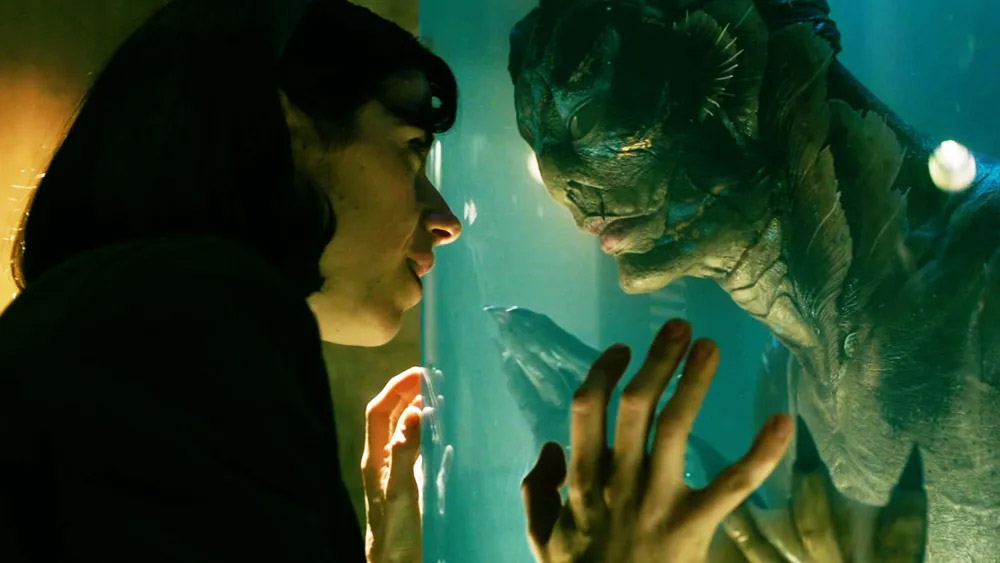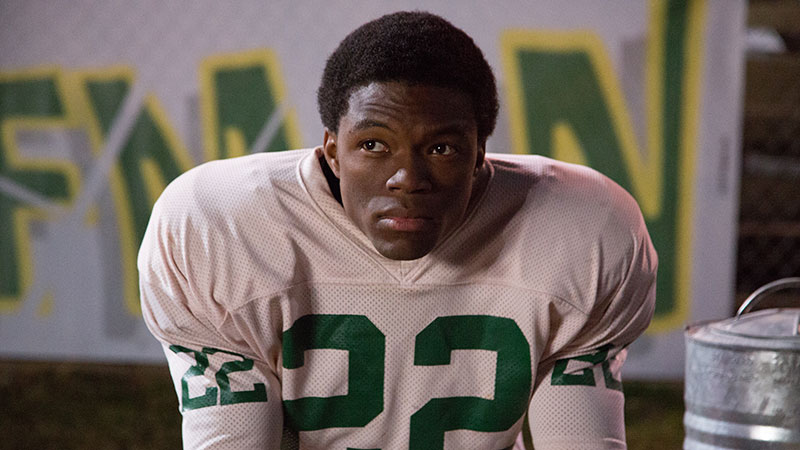Within Guillermo del Toro’s vivid, varied and vibrant filmmaking dossier, The Shape of Water stands as a testament to the director’s resounding ability to craft an enchanting narrative out of the strange and eerie. The 2017 film, pioneered by a compelling romance between a mute woman and an amphibious creature, while rooted in horror, marries contrasting themes of charm and terror within an environment of murky greys, deep blues, and glistening greens.
The storyline, co-written by del Toro and Vanessa Taylor, is filled with both sheer intensity and tender moments. Set against the backdrop of 1962 America amidst the heights of Cold War anxiety, we witness Elisa Esposito (Sally Hawkins), a mute janitor, lab worker; deeply lonely in her silent world, but finding solace in her strong companionship with co-worker Zelda (Octavia Spencer) and neighbor Giles (Richard Jenkins). Her tenacious routine is disrupted when a mysterious amphibious creature (Doug Jones), captive of obsessive, bitter antagonist Colonel Richard Strickland (Michael Shannon), enters her life. From there, a unique romance progresses, one in which the language barrier becomes not an obstacle but a bridge bringing two souls together.
Sally Hawkins’s outstanding, mainly non-verbal performance as Elisa is a pure embodiment of grace and courage that transfixes viewers from the onset. The strength of her character is interlocked with the watery, piercing eyes that communicate the inaudible emotions flawlessly, making a wordless interaction as poignant as a Shakespearean soliloquy. Richard Jenkins and Octavia Spencer offer noteworthy performances, illuminating the screen with their vibrant portrayals of marginalized characters harbouring personal wars.
Michael Shannon’s ruthless, yet slightly pitiable antagonist forms an essential cornerstone of the narrative. His characterization speaks volumes about the societal and cultural attitudes of the period the movie is set in. And indeed, Doug Jones, as the enigmatic yet gentle creature, embodies the pinnacle of physical acting. His portrayal gives us a creature that is both alien and familiar, managing to evoke empathy and fascination amongst audiences.
The Shape of Water’s setting is beautifully realized through tribute-paying cinematography. Every frame, vibrant with contrasts and shadows reminiscent of noir cinema, is saturated with murkiness that instead of desolating the atmosphere, adds depth and beauty. The ominous greys and blues are effortlessly meshed with lush aquatic shades that reflect on del Toro’s aesthetic theme—celebrating the beauty of darkness, the extraordinary lying within the ordinary.
The mesmerizing score perfectly complements the film. Alexandre Desplat’s orchestration echoes the water’s mutable nature—caressing in its calm and stormy in its rage. Del Toro’s classic attention to detail results in a dreamy aura, the meticulous design casting an alluring watercolor painting-like sheen over the movie—a visual symphony.
However, in its stride to bind genres, The Shape of Water occasionally trips up. While it’s a splendid ode to the magic of classic cinema with tinges of a horror-tinged fairy-tale, the conflicting themes sometimes muddle the film’s essence. Particularly, in the rush to embody love, loss, friendship, and fear, the movie loses touch with its key characters, prompting some moments that feel forced.
Amidst odes to cinema, Cold War paranoia, exploration of social themes such as sexism, ableism, and racism—the heart of The Shape of Water lies within the profound celebration of love, acceptance, and freedom. This beautiful beast, while not without flaws, draws you into its mysterious depth and refuses to let you go, even as the credits roll. The narrative’s charm isn’t just confined to the relationship between Elisa and the creature, but is reflected in everyone she forms relationships with, resonating the value of empathy in a cold, bleak world riddled with hostilities.
All in all, The Shape of Water is an enchanting cinematic experience that offers a treasures trove of emotions and themes all intertwined in a grand magical narrative. Under Guillermo del Toro’s meticulous direction, it possesses the power to transform its murkiness into captivating beauty. Conclusively, it stands as a film that explores love like no other, unraveling it from unexpected fissures—firmly in its uniqueness and unquestionably a cinematic spectacle.



